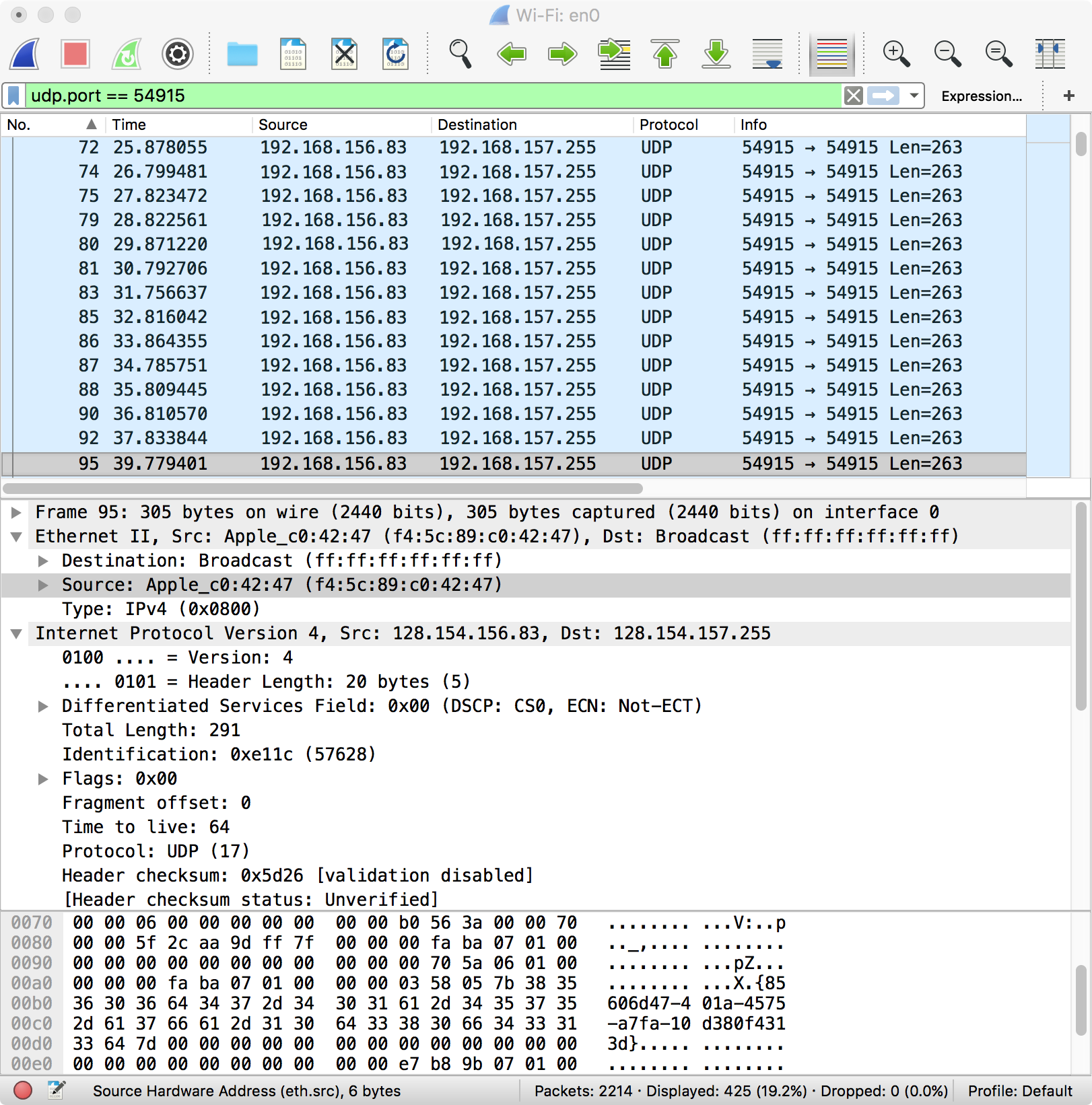

You may find it at c:\Windows\System32\config\SYSTEM Extract SYSTEM and NTDS.DIT files from Domain Controller.See release notes in NTDSXtract distribution for further details. However, it turns out that Wireshark doesn't care.

Unfortunately, aside from the Kerberos keys, most of the other data in the keytab is WRONG. This method does not reset passwords and does not modify anything on Domain Controller.
#Wireshark filter by protocol udp windows#
The NTDSXtract framework may be used to dump all Kerberos keys on a Windows Domain Controller to a keytab file. Note that the ktexport.exe program will not run over Remote Desktop or similar but see REAME.ktexport for a workaround. So the generated sam.keytab can be used with Wireshark to decrypt Kerberos tickets. Unfortunately, aside from the RC4 keys, most of the other data in the keytab is WRONG. A sam.keytab file will be generated in the current directory. Simply run ktexport.exe on the target domain controller. The ktexport package is just a modification of the pwdump2 program from. This method may be superior to using ktpass.exe because it does not reset passwords. The ktexport utility may be used to dump all RC4 keys on a Windows domain controller to a keytab file. WARNING: pType and account type do not match.
#Wireshark filter by protocol udp password#
WARNING: Resetting quark$'s password may cause authentication problems if quark$ is being used as a server. WARNING: Account quark$ is not a user account (uacflags=0x1021). C:\temp> ktpass /out quark.keytab /mapuser /princ cifs/ /crypto RC4-HMAC-NT /rndpass /ptype KRB5_NT_PRINCIPAL The below is an sample ktpass.exe command line dialog for exporting a computer account principal (note that resetting the password on a computer account of a machine joined to the domain could be bad - use ktexport.exe instead). Please note that only the latest version from the Windows 2003 SP1 support tools supports RC4 keys. Key for (hex): 5c4dbe6a8a44446f8d2899ff08ea14f2Ī tool from Windows 2003 support tools, called ktpass.exe, can also create a keytab file. Second example: this time creating a keytab file if you know the key, and using algorithm rc4-hmac because the key is actually the NT hash (see NTLMSSP) Use rc4-hmac for older environments (see the etype field to know the exact algorithm used). Ktutil: addent -password -p username/ -k -e aes256-cts-hmac-sha1-96ĪES256 is used by default in modern Windows environments. It can be used to create a keytab file if you already know the principal's password or Kerberos key.įirst example: the following commands create a keytab file for a user in a Windows domain if you know the password. ktutilīoth MIT and Heimdal Kerberos provide a tool called ktutil. Various utilities can be used to create a keytab file on various OSes. You can refer to this tutorial: Decrypt Kerberos/NTLM “encrypted stub data” in Wireshark, or the steps below. This feature also provides decryption of several protocols using GSS-API and Kerberos such as LDAP and DCE/RPC. Windows support for this feature was added in 0.99.3. This support is available for Linux/Unix. The Kerberos dissector is fully functional and can if compiled and linked with either Heimdal or MIT kerberos libraries decrypt Kerberos tickets given that a keytab file containing the shared secrets is provided. All modern clients support TCP but older clients might not.


Wireshark also has limited support for some extensions to Kerberos v4 which Transarc introduced for their AFS implementation. There is no official specification for Kerberos v4 but Wireshark does support the "original" version of this protocol. While Kerberos v4 still has limited use in AFS environments, it has largely been replaced by Kerberos v5 in all other environments. This version of the Kerberos service and protocol was version 4. Initially Kerberos was developed and deployed as part of the Athena project. It is popular both in Unix and Windows (Active Directory) environments. Kerberos is a service that provides mutual authentication between users and services in a network.


 0 kommentar(er)
0 kommentar(er)
